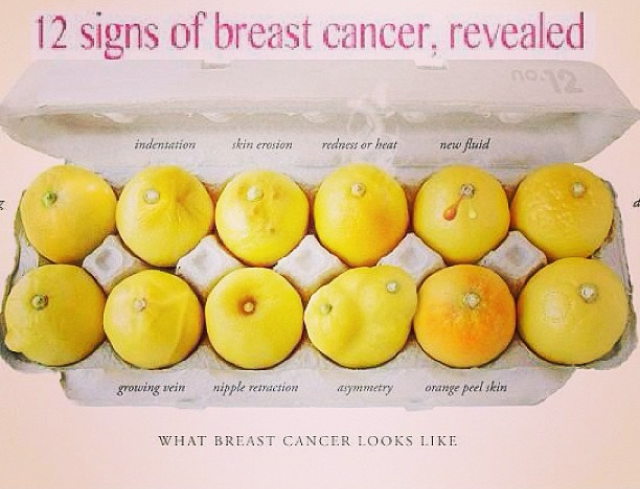According to a study published in JAMA Surgery, younger women with breast cancer are increasingly opting to undergo double mastectomies, even if they were diagnosed with early-stage cancer in only one breast. The procedure to remove the healthy breast, along with the affected breast is called a contralateral prophylactic mastectomy (CPM).In fact, the rate has gone up so much in some states, more than 42% of women 20 to 44 who underwent surgery between 2010 and 2012 opted to remove both breasts with a CPM, researchers want to know why.
(Above: Amberlea Childs, 36, was newly engaged when she found a lump the size of a large walnut in her right breast. She would go on to have a double mastectomy.)
Ahmedin Jemal, vice president for surveillance and health services research at the American Cancer Society, and senior author of the study believes there are a couple possibilities for the rise: the desire for symmetry and the Angelina Jolie effect. (Remember she was diagnosed with the BRCA-1 cancer gene that mutation that causes breast cancer and chose to have a double mastectomy.)
Quite surprisingly, both the American Society of Breast Surgeons and the American Board of Internal Medicine came to a consensus on CPM and published it in the journal Annals of Surgical Oncology:
The new study also included data on 1.2 million women aged 20 and older in the U.S. who were diagnosed with early-stage invasive unilateral breast cancer between 2004 and 2012.Researchers took a close look at which patients in the data underwent a lumpectomy 58.4%); a unilateral mastectomy, in which only the breast with cancer is removed(32.9%); or a contralateral prophylactic mastectomy (8.7%) and found that the proportion of women opting for CPM declined with age. Only 2.4% of those 70 or older had both breasts removed, compared with 29.3% of those 20 to 29."CPM should be discouraged for an average-risk woman with unilateral breast cancer. However, patient's values, goals, and preferences should be included to optimize shared decision making when discussing CPM. The final decision whether or not to proceed with CPM is a result of the balance between benefits and risks of CPM and patient preference."
However, nationally, the prevalence of CPMs increased over time: between 2004 and 2012, the number of women 45 and older who had both breasts removed jumped from 3.6% to 10.4% and in women 20 to 44, the number rose from 10.5% to 33.3%.
Where women are more likely to get healthy breasts removed
The highest proportion of CPM is done in the Midwestern states: Nebraska, Missouri, Iowa, Colorado and South Dakota. But the trend continues across the East Coast; in Virginia, 9.8% of younger women underwent CPMs between 2004 and 2006 and 32.2% between 2010 and 2012, in Rhode Island, 7.6% rose to 25.8%, and in West Virginia, 6% rose to 26.4%, in Wisconsin, 13.8% rose to 32.7%.From the article:
What seems to be clear is that physicians need to make more of an effort to have a balanced discussion with patients to try to dissuade them from removing a healthy breast. Although quite frankly, the ideal situation is that physicians talk to their patients about living a healthy lifestyle that would help hinder cancer growth in the first place. But yes, please encourage women to stop removing their breasts!"Another study, published last year in the journal Annals of Surgery, found that the use of CPM overall more than tripled in the United States between 2002 and 2012, despite a lack of evidence that the procedure offers a survival benefit. 'Further examination on how to optimally counsel women about surgical options is warranted,' the authors of that study wrote."
RELATED ARTICLES:
- Mammogram Month Launched With Devastating Report on Harms and Lack of Effectiveness
- Largest, Longest Study on Mammograms Again Finds No Benefit
- Mammograms Send Women To Their Deathbeds Faster And Increase Their Risk of Breast Cancer As Much As 30 Percent
- Your Greatest Weapon Against Breast Cancer Is Not Mammograms




It seems to me that cancer is life altering for a reason and many who makes lifestyle changes survive.